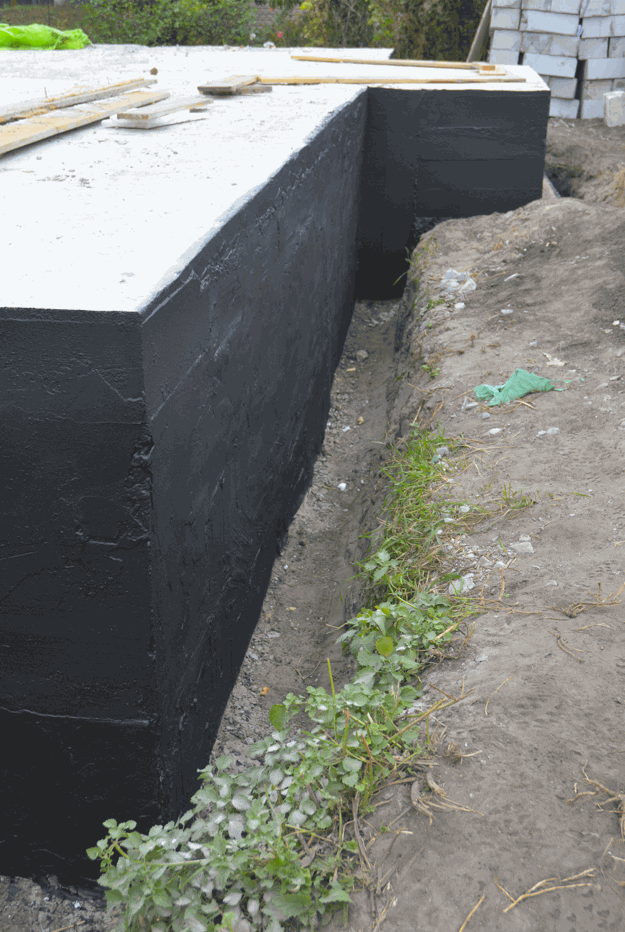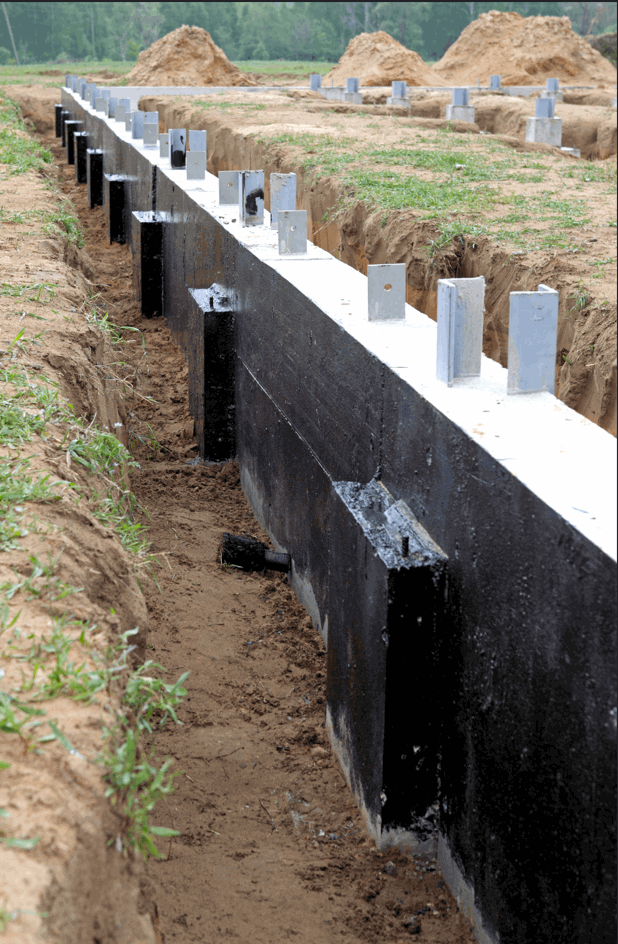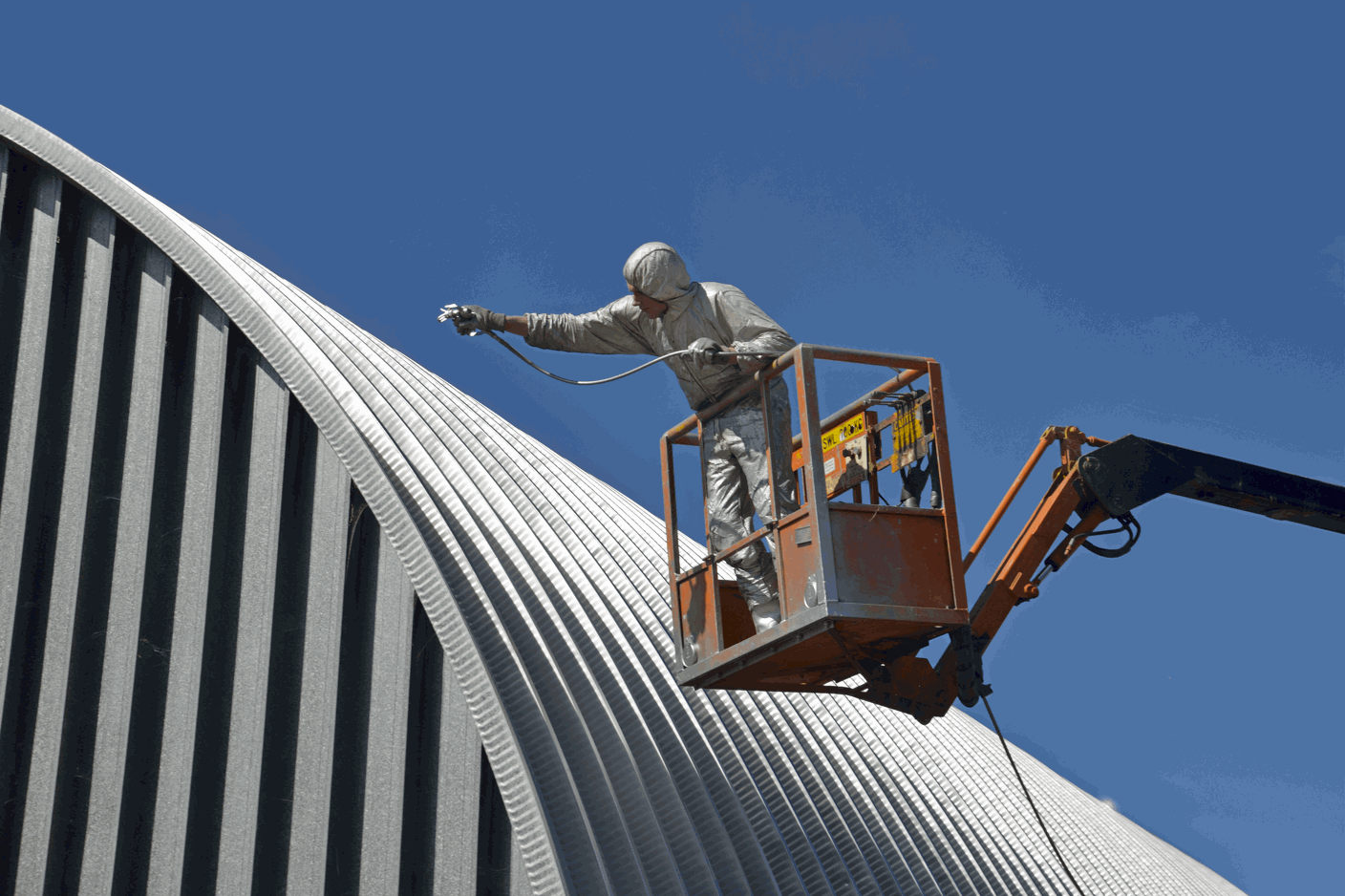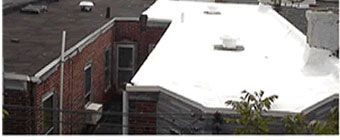Liquid Butyl Rubber is ideal to recoat existing roofs and add a significant number of years to the life of a roof. In fact, our customers have described it as essentially getting a new roof for a fraction of the cost, since, for most roof types, this is a single application with significant cost savings when compared to multiple coat systems. The cost savings alone have made it the choice for thousands of our customers over the years. Labor costs are also decreased since you only need one coat versus 3-4 with other systems. Below, you will find the roof types that are compatible with Liquid Butyl Rubber. . We suggest if you have any doubts about your particular roof, or your particular roof type is not listed, conduct an adhesion test prior to application. We are not responsible for improper roof preparation prior to application.
- Various Metal Roofing systems
- Weathered Galvanized Click Here for More Information
- Weathered aluminum
- Weathered copper
- EPDM
- Any original EPDM rubber roofing system.
- Fiberglass
- Hypalon
- PVC - Please visit our high volume Silicone product page
- Grace Ice and Water Shield.
- Acrylic Sheet and any acrylic based product
- Weathered Vinyl
- (Aged) Polyurethane Foam
- Torchdown
- Tar and Gravel
- Modified & BUR roofs
- Concrete, where there is little foot traffic (consider moisture test. If moisture is present bubbling may occur)
- Can be tiled over (can be applied over thin-set)
- Any roof where a 3rd party coating such as an elastomeric or acrylic was previously applied.
- TPO-Must be aged five years.
- TPO must be cleaned with our Roof Protect found on our site
- TPO must have remaining service life. TPO scrim must not be visible throughout the field of the roof. If very light scrim is showing we suggest ordering our TPO Base coat.
- Surface must be dry. Any of these could cause the material to blister/wrinkle
- Sprayed Urethane Foam Roofs- Be sure roof is dry. Moisture will cause coatings to blister (Call for tech support)
- Any other application must be approved in writing
- NOTE: Not to be used for 3rd party silver-asphalt based coatings unless entirely removed
Avoid applying over SILVER based asphalt-coatings such as blackjack, They must first be fully removed from the substrate prior to the application of our product.
NOTE: Not to be applied over PVC roofs or silicone coatings. After application for any ponding water areas of the roof we suggest sweeping any standing water that occurs 8 hours after application, so the Liquid BUTYL Rubber has a full 13 days to dry out. This is ONLY needed in the ponding water areas. Failure to do so may cause delamination.
Liquid Butyl Rubber offers significant tensile strength, elongation as well as other technical attributes which can be found on our “Technical” page.
The above are only guidelines. Any applications related to chemicals should be tested thoroughly before putting in service.
There has been no other product to match the durability of Liquid Butyl Rubber in the Roof Repair Products industry. Because Liquid Butyl Rubber is solvent-based it can boost the broad temperature tolerance we have been speaking about. This is not the same case for water-soluble products like elastomerics, acrylics or urethanes. If it were to light rain unexpectedly just a few hours after you applied Liquid Butyl Rubber, it will not harm the application and curing will resume when the water has evaporated. Once applied, Liquid Butyl Rubber will not wash off.
FOUNDATION Leaks and Sealing
Liquid BUTY Rubber has been used extensively over the years to provide a watertight seal on new and existing foundations. Builders have relied on the product as their “Go-To” product of choice due to it ability to chemically bond to the concrete allowing for a very strong bond while still maintaining its flexibility when fully cured. Cracks should be filled first with our SeamTIght product prior to applying our Liquid BUTYL Rubber. A solid foundation is the backbone of any structure, bearing the weight of the entire building above it. However, even the strongest foundation can be compromised without proper protection against water infiltration. Waterproofing a foundation is not just an optional add-on; it's a crucial step in ensuring the longevity and stability of any building. Here's why it's so important. MORE
Water damage is one of the leading causes of foundation deterioration. When water seeps into the foundation, it can weaken the concrete, leading to cracks, erosion, and even structural instability over time. By waterproofing the foundation, you create a barrier that prevents moisture from penetrating the concrete, thus safeguarding its integrity against the damaging effects of water. Water intrusion doesn't just affect the foundation itself; it can also wreak havoc on the entire structure. Moisture in the foundation can promote the growth of mold and mildew, which not only poses health risks but can also compromise indoor air quality. Additionally, water infiltration can lead to dampness in the basement or crawl space, creating an ideal environment for pests such as termites and rodents.
Beyond structural concerns, waterproofing the foundation can also save you significant time and money in the long run. Repairing water damage to a foundation can be a costly and disruptive endeavor, often requiring extensive excavation and reconstruction. By proactively waterproofing the foundation, you can avoid these expenses and inconveniences, ensuring that your building remains sturdy and secure for years to come.
Waterproofing isn't just for new constructions. Even existing buildings can benefit from foundation waterproofing as a preventative measure against potential future water damage. The importance of waterproofing a foundation cannot be overstated. It's a fundamental step in safeguarding your investment and ensuring the long-term stability and durability of any structure. By taking proactive measures to waterproof your foundation, you can protect against water damage, preserve indoor air quality, mitigate pest infestations, and save yourself from costly repairs down the line.



















